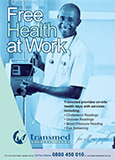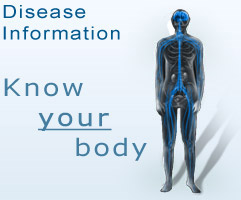Crohn's Disease
What is Crohn's disease?
Crohn's disease is an inflammatory (swelling) condition of the digestive tract that affects both children and adults. Although Crohn's disease is usually chronic, medical and surgical treatment can help control the progression of the condition, allowing many patients to experience long periods of symptom-free remission.
Causes of Crohn's disease
The exact cause of Crohn's disease is unknown but it seems that the condition is mostly hereditary and affects certain groups more than others. There is a possibility that in a genetically susceptible person, a trigger could lead the body's immune system to inappropriately cause inflammation in the stomach. Bacteria (germs) and food in the intestines could also play a role. Once the inflammation and swelling begins, it causes damage to the intestines, which is primarily responsible for the symptoms of the condition.
Symptoms of Crohn's disease
Common signs and symptoms of Crohn's disease include mouth sores (called oral ulcers), diarrhoea, abdominal pain, weight loss and fever. Patients can also have problems outside of the digestive tract, including a skin rash, joint pain, eye redness and, less commonly, liver problems.
Crohn's disease usually follows a pattern of flares (when the condition worsens) and remissions (when it improves). Approximately 10% to 20% of patients will enter remission after their first flare of Crohn's disease. The pattern in other patients can be quite variable, ranging from recurrent periods (weeks to months) of symptoms such as mild diarrhoea and cramping to, less commonly, severe and disabling symptoms (such as severe abdominal pain and bowel blockage). Treatment can help drive the active condition into remission and then prolong remission.
Treatment of Crohn's disease
Medication
Many different drugs are available to treat Crohn's disease. The choice of medication will depend on the area of the digestive tract affected by the condition and the symptoms. Commonly used medication includes sulphasalazine, 5-aminosalicylates, antibiotics, steroids, immunomodulator drugs and biologic response modifiers.
Dietary recommendations
Patients with Crohn's disease may be aware of foods that worsen their symptoms, particularly during flares, and it is reasonable to avoid them. However, eliminating foods can lead to malnutrition (not having enough nutrients in your body to maintain good health). It is therefore important to consult your healthcare providers in decisions regarding diet. In some cases, a consultation with a dietician is recommended.
Other measures
Avoid becoming malnourished, engage in regular exercise, stop smoking and try to avoid non-steroidal anti-inflammatory drugs.
Surgery
Surgery is usually performed as a last resort since it does not cure the patient, although sometimes it may be the fastest way to restore health. Approximately 80% of patients with Crohn's disease will require an operation at some time, usually to stop bleeding, to close fistulas (an abnormal connection between the intestine and other organs), bypass obstructions, and often to remove the affected areas of the intestine.
Recurrent treatment
If Crohn's disease flares after a remission or surgery, it is usually treated according to the same guidelines as the initial episode. In some cases, different medication is used to treat a recurrence.
Treatment of children
Crohn's disease appears before the age of 18 in about 20% of patients. If the condition is not treated, about half of these children will have short stature or delayed growth. Aggressive nutritional therapy with supplements, a high-calorie diet and sometimes enteral feeding (feeding with a tube), can help normalise growth. Steroids can slow growth and lead to osteoporosis (weak bones) in children; therefore these treatments are often the last resort if the child requires long-term therapy. Height, weight and bone mineral density must be closely monitored in children who take steroids (prescribed medication).
Complications
Over time, the intestinal problems of Crohn's disease and the ongoing inflammation and swelling can lead to secondary health problems. Fortunately, many of these problems can be anticipated and prevented. If they do occur, most can be successfully treated. The complications include the following:
Inflammation
The stomach, upper small intestine, distal small intestines (ileitis, ileocolitis) and colon (colitis) may become inflamed.
Malnutrition
There are many consequences of malnutrition, including delayed growth and puberty in children, osteoporosis, a decreased ability to tolerate surgery and psychosocial problems.
Bone complications
Up to 30% of patients with Crohn's disease develop osteoporosis (weak bones), which can lead to bones breaking. Patients who take steroids for long periods of time and postmenopausal women are particularly at risk.
Liver and gallbladder complications
Crohn's disease can lead to liver disease and also increase the likelihood of gallstones.
Colorectal cancer
Patients with Crohn's disease have a high risk of developing colorectal cancer in areas of active inflammation. Most experts recommend a regular screening colonoscopy (camera inserted in the rectum) to identify premalignant and malignant changes in the colon.
Skin conditions
Several inflammatory skin conditions can develop in patients with Crohn's disease, such as:
- erythema nodosum, which typically appears as raised, tender, red or violet nodules under the skin, which are about 1cm to 5cm in diameter. Areas commonly affected include the front of the lower legs; and
- pyoderma gangrenosum, which may first appear as single or many reddened papules (pimples) or pustules that are often preceded by trauma to the skin. These occur most commonly on the legs but can develop in any area of the body.
Eye inflammation
Swelling and redness of the eyes occurs in up to 5% of patients with Crohn's disease. Some symptoms include the appearance of ‘floaters' in the vision, eye pain, blurred vision, sensitivity to light, headaches and burning or itching of the affected eye(s).
Mouth sores
These often occur during flares of Crohn's disease. They are usually found between the gums and lower lip or along the sides or under the tongue.
Perianal complications
The major perianal complications of Crohn's disease include fissures (tears), ulceration, fistulas (an abnormal connection between the intestine and other organs), abscesses and stenosis (narrowing of the anus). These conditions may occur alone or in combination. Symptoms can vary from anal pain and purulent discharge to bleeding and incontinence (loss of bladder control). Although treatment resolves most perianal complications, recurrence is frustratingly common and may require long-term treatment.
References
http://www.uptodate.com/home/index.html
 TransmedBanner4.jpg)

